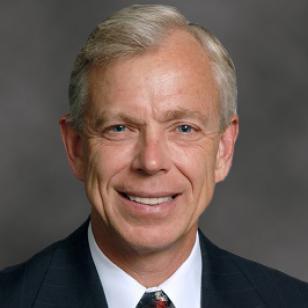|
|
|
Contributors | Messages | Polls | Resources |
|
Verizon CEO Predicts Death of 300-Channel Bundles Verizon CEO Lowell McAdam says the 300-channel universe, touted only a decade ago, has had its time. Speaking at the Internet Association's Virtuous Circle conference on Monday, he said that customers no longer wanted large channel packages and that if it were up to them, Verizon would only sell skinny bundles. More than 40% of Verizon Communications Inc. (NYSE: VZ)'s TV customers subscribe to a slimmed-down bundle of channels today, and according to a report from Variety, McAdams estimated that figure would rise to 50% if Verizon was allowed more packaging flexibility by the media companies that own these channels. Verizon faced a lawsuit from Walt Disney Co. (NYSE: DIS) regarding the inclusion of ESPN in its skinny bundle, which the two companies eventually settled out of court. But McAdam took this opportunity to point out that ESPN was getting fewer viewers on Verizon's service than Complex Media, its joint venture with Hearst.
McAdam's position is markedly different from those of other pay-TV operators, such as cable's Comcast Corp. (Nasdaq: CMCSA, CMCSK). Comcast CEO Brian Roberts has repeatedly said that he doesn't believe that OTT services are the right approach for his company, and others have questioned the attractiveness of skinny bundles for a wider audience. Most MSOs have talked about targeting younger audiences with slimmed-down TV packages, but see the full-fat bundle as being important for the broader pay-TV subscriber base. (See Comcast's Gatzke Evaluates Slim TV Models and Is Comcast Right to Reject OTT?) Pressure to deliver à la carte channels has been building for over a decade now, as subscribers have seen their cable bills rise steadily and found they are subscribing to a growing number of channels that they never watch. But operators have generally held back from advocating à la carte. I should note that McAdam is advocating skinny bundles, not à la carte. But he is pushing for something that is a lot closer to à la carte than where we are now. The reason for operators to favor larger bundles is that they have substantial sunk costs for TV delivery. The cost of building and running a network, headends, marketing services, customer care, etc. are all largely the same regardless of the size of your monthly TV bill. As such, it makes more sense to get you to sign up for a more expensive package, since their revenues are higher. In the case of large bundles, so are their costs -- since they have to pay for more channels. But the higher channel packages are also higher margin. The more popular, most essential channels are the most expensive for operators to carry, so margins are lower for basic packages. Consequently, operators have been cautious about changing things too drastically, since it could affect their economics. They are also wary of the impact it could have on the economics of the channels themselves, and how that might result in new or higher carriage costs for them. McAdam's decision to squarely blame the programmers for Verizon's inability to offer skinnier bundles is a strong statement, and a more aggressive stance than we have seen before from a pay-TV provider. It underscores the changes that the industry is seeing from OTT services, and the pressure exerted by a younger audience that is just less willing to endure the status quo. — Aditya Kishore, Practice Leader, Video Transformation, Telco Transformation |
Contentious issues that are likely to fuel lawsuits and angry blogs in the coming year.
Content producers are unhappy with the advertising approach and revenues they are getting on Facebook Watch.
OTT video usage is driving the penetration of various Internet connected devices to help view online streams on the larger TV screen.
Major Hollywood studio to trial 'virtual' movie theaters using head-mounted displays.
Network technology vendor Sandvine has found that piracy isn't only hurting network operator profits – each pirated set-top box is also using up 1TB per month in 'phantom bandwidth.'
 On-the-Air Thursdays Digital Audio On-the-Air Thursdays Digital AudioARCHIVED | December 7, 2017, 12pm EST
Orange has been one of the leading proponents of SDN and NFV. In this Telco Transformation radio show, Orange's John Isch provides some perspective on his company's NFV/SDN journey.
 Special Huawei Video Special Huawei VideoHuawei Network Transformation Seminar The adoption of virtualization technology and cloud architectures by telecom network operators is now well underway but there is still a long way to go before the transition to an era of Network Functions Cloudification (NFC) is complete. |
|
|
|
||



















